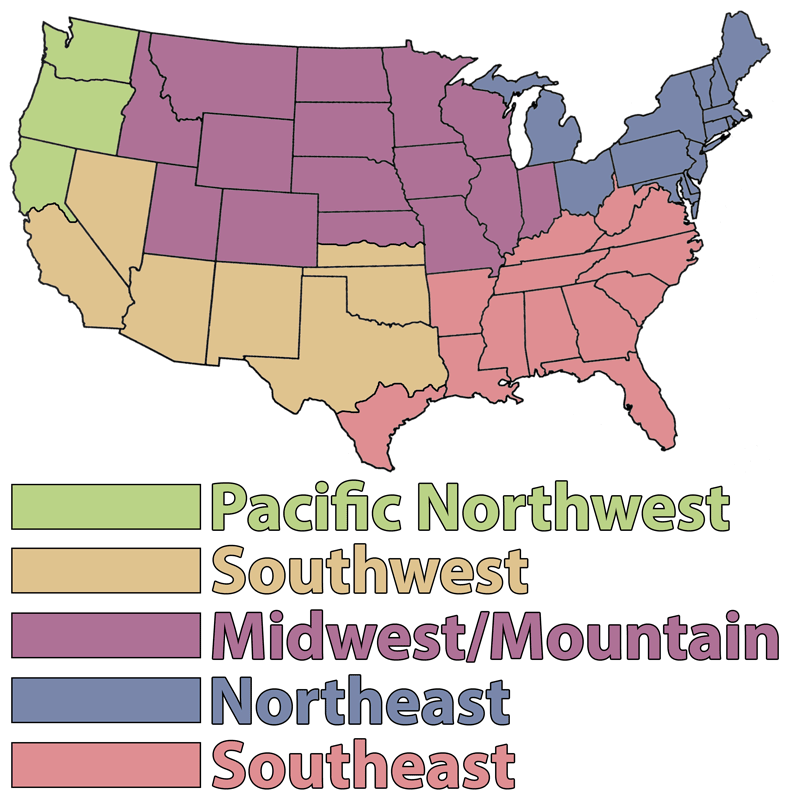Group houseplants near each other to form a support group to cope with the low humidity of most winter homes.
Gardening "To Do" Tips by Month for Rochester, NY
Apply a layer of winter mulch to protect your perennials after the first few freezes.
To protect tender perennials from harsh winter weather, build a wooden box with no top or bottom. Place it over the plants after the ground has frozen and fill with leaves.
Remember to remove any new fallen leaves from your lawn and gardens, as the leaves can block sunlight or encourage disease among your plants.
Look over the stored vegetables frequently and remove decaying specimens.
If the weather is dry, occasionally water your lawn, shrubs, and small trees.
Most plants and shrubs winter-kill because of alternate freezing and thawing, so it is a good idea to bank them up with snow.
To help reduce winter damage to your lawn, minimize traffic on the frozen grass.
This is a good time to start pruning dead and dangerous limbs from trees. These should be burned in case they harbor insects and disease. Apply tree paint to the wounds made in sawing off limbs.
Make sure that mulch is pulled back from tree trunks so that mice don’t hide and destroy the bark.
Prune any dead or weak branches now, so that they do not break under the snow or ice.
Stop fertilizing and reduce your watering by half for houseplants until active growth resumes.
Cover your compost pile to prevent rains and snows from leaching out nutrients.
Check your houseplants for any insects, especially spider mites. Wash off mites by setting in the shower to wash off.
If iris foliage is hit with heavy frost, remove and destroy it to eliminate borer eggs.
If your houseplants have a sticky substance on the leaves and aphids underneath, spray with soapy water or insecticidal soap.
Check the “bones” of your garden or landscape for visual appeal. Hedges, stone walls, and pathways all contribute to the underlying structure. Make a note of what you will change in the spring.
Use sand on icy walks instead of salt to avoid plant and grass damage.
If you’re in an area with snow, go out and gently shake the snow from evergreens after heavy snowfalls; frozen wood is brittle. Remove any broken limbs with a sharp saw.
Move your houseplants away from icy windows to prevent any chilling.
Make holiday wreaths from grapevines, greens, and dry seedpods.
When watering your houseplants, avoid using cold water because it may shock the plants; use tepid water instead.
As houseplants are growing more slowly in December light, cut down on watering by half until active growth resumes. Hold off on fertilizing as well.
Houseplants with large leaves benefit from being washed with a damp cloth to remove the dust.
Group houseplants near each other to form a support group to cope with the low humidity of most winter homes.
Save and inventory leftover seeds from your favorite plants for next spring; store them in airtight containers and keep them in a dry place.
After a heavy snowfall, go out and gently shake the snow from evergreens. Work carefully because the frozen wood is brittle. Remove any broken limbs with a sharp saw.
Bring in the evergreens for holiday decorations!
Check your fruit and vegetables in storage; throw away any that are damaged or diseased.
Relax and dream about next year’s garden!

